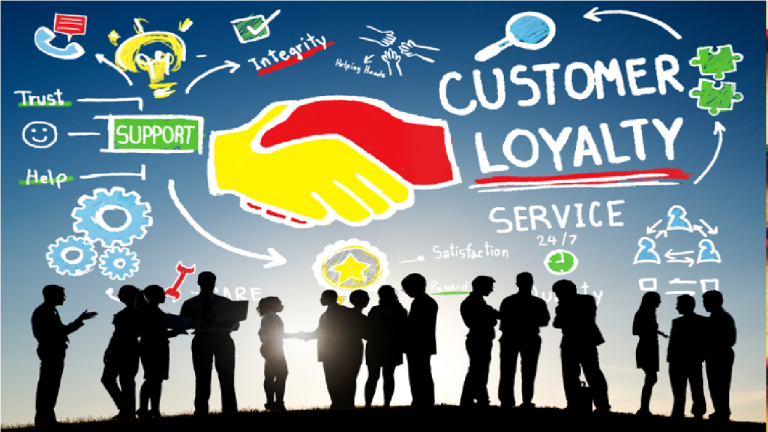
We are used to hear organizations talk about meeting the needs of their customers. Need and want are major concepts in elementary economics. It could be confusing initially, but for good students, they always master the differences. While deficiency of need could cause severe negative outcome, want is not that critical. Nonetheless, there exist subjectivities in classifying individual or personal needs and wants; a topic for another day.
So, from high school to business school, we are taught that understanding your customers’ needs is very critical in surviving as a business concern. Based on this, many inexperienced marketing directors develop models and strategies upon which their organizations align their products and services for the market. They anchor their organic growth and survivability solely on meeting those needs in the market.
Unfortunately, meeting the customer needs is not enough. You must exceed the needs if you want to remain relevant in the market. The 21st century is not a century of market needs; it is one that requires more than meeting needs. Why? Technology disrupts the habits of the customer so fast that if you focus on needs, you will never be an industry leader. For early adopting customers, it would be very difficult to keep them loyal by just meeting their needs. They want more from you.
They want you to understand what their expectations are. Expectation here has to do with meeting their present need and understanding that they need more than what you are giving them. It could be like a customer who wants to heat his house. He lives green, but he heats his house with dirty coal. It makes him very unhappy that he preaches green lifestyle but cannot power the house with green technology. His income cannot support investment in solar panels.
He was expecting the utility firm to provide something greener than coal. His needs are met; yet, he expected more than that. Agile firms will go to serve that expectation and win the customer. It is being conscious that even though the needs are met, we know customers expect more from us. When firms work hard to meet customer expectations, they become innovative in the process.
While expectation can help you stay in the game, what firms really need to do is to meet the perception of customers. Perception is the king of all marketing. Unfortunately, few firms get to that level. Excellent innovative technology is required to play at this level. It is risky because if you get it wrong, you can harm your organization. Perception is providing to customers what they never expected or imagined they needed. But the day they see the product (or rarely service), they will embrace it en mass.

For all the modern firms, Apple is among the few that play at this level. Apple provides products that exceed expectation; yet, customers never actually asked for them. They just arrived and we all embraced them. It is beyond expectation because you never thought about their possibilities or existence. It was more than need because you knew nothing about the constructs of those products. But the day you see them on TV, you will go for them. Apple’s iPod is a good example.
Before it came, very few people, excluding Steve Jobs and company imagined that such could be accommodated in this planet. When iPhone prototype was shown to Verizon, they rejected it because (I suspect) they lacked the capacity of understanding customer perfection. There was nothing to benchmark iPhone because there was none like it. Products that fit this category do not need focus groups during development because those insights make no sense. Unless the product is ready, many customers cannot imagine it. It is an abstractive product that becomes real when you see a completed version.
The interesting thing is that all products that succeed at the level of perception are usually disruptive in their sector or industry. Google search cannot be considered to fall in the category of perception because many people already craved for better search because neither Microsoft nor Yahoo was offering a good one. So a product could be disruptive and yet not a percepting product. However, all percepting products are disruptive.
Succeeding in markets today will require understanding what the customer perceptions are. While meeting their expectations is a good business model, the risk to that is that one technology can immediately shift their expectations. If you have a fast device today, they will expect a faster one in six months; it is a cycle of marginal innovation. However, if one creates a percepting device that works, your business will be in trouble. Ask the film camera industry; they were meeting the expectations of film photography, until the day digital camera arrived and they lost more than 90% of their customers. So, make meeting your customer perception the lifeblood of your organization strategy.
In a research during my business school, I discovered that the most profitable customers are those whose perceptions are met. They become more loyal and you can have great margins while serving them. This research was done in Lagos (Nigeria). I developed a three-segment pseudo pyramid where Need is at the bottom, Expectation at center and Perception at the top. The percepting customers are the most sophisticated to service. If you can nurture and keep them, you become the king of your market. They are willing agents that enable disruption in market composition and are innovation-tasty early adopters.
---
Connect via my
LinkedIn |
Facebook |
X |
TikTok |
Instagram |
YouTube
Register for Tekedia Mini-MBA edition 19 (Feb 9 – May 2, 2026): big discounts for early bird.
Tekedia AI in Business Masterclass opens registrations.
Join Tekedia Capital Syndicate and co-invest in great global startups.
Register for Tekedia AI Lab: From Technical Design to Deployment (next edition begins Jan 24 2026).


It has really been an incredible model for our business here in (Lagos Nigeria).